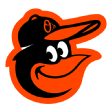So here we are. Gerrit Cole is in pinstripes. Madison Bumgarner will be in ... hey, what will the Diamondbacks be wearing in 2020? Anthony Rendon is in Los Angeles, but not with the Dodgers. Stephen Strasburg remained with the Nationals. How will these deals work out? Check back in many years.
What we can do is check back on the 2010s to see how free agency worked -- or didn't work -- for all 30 franchises.
For each team, we'll list the total dollars committed in free agency (starting with new contracts for the 2010 season, not including money carried over from previous deals), where they ranked in the decade in wins, the biggest contract and the best and worst contracts. The year listed for contracts is the first season of the deal. It's easy to view the bad contracts as criticism for the players involved. That's not necessarily fair. They earned their money: Some team agreed to pay them. That's the nature of free agency, of course, since you're projecting future performance for players often in their 30s. And remember, while many free agents end up being overpaid, they were all underpaid earlier in their careers.
Division-by-division bests and worsts: AL East | AL Central | AL West | NL East | NL Central | NL West
AL East
Total dollars committed: $1.055 billion (2nd)
Decade wins: 921 (1st)
Playoff games: 51
Biggest contract: Masahiro Tanaka, 2014 (7 years, $155 million)
No, the Yankees didn't spend the most in free agency in the decade -- that would be their rivals to the north. Nearly half of the team's $1 billion in spending came in the same offseason, when they dished out $471 million to sign Tanaka, Jacoby Ellsbury, Brian McCann, Carlos Beltran and others -- and promptly won 84 games. That led to a period of relative austerity, and the Yankees didn't spend $100 million on a free agent again until they signed Cole to his record-breaking deal.
Good: Tanaka
There have been some bumps along the way, and while he hasn't been an annual Cy Young contender, Tanaka has been effective, averaging 2.9 WAR per season. Since signing, he ranks 14th in the majors with 75 wins and 21st in ERA at 3.75 (minimum 900 innings). He also owns a 1.76 ERA in eight postseason starts, so don't blame him for the Yankees' failure to reach a World Series in the decade.
Bad: Ellsbury, 2014 (7 years, $153 million)
The Ellsbury deal looked risky from the beginning, a player who had a monster 2011 season when he finished second in the MVP vote but one who had also battled injuries, playing 18 games in 2010 and 74 in 2012. He had a 3.6 WAR debut season with the Yankees, but it went downhill from there, and the seven-year contract will yield just 39 home runs and an average of just 74 games per season.
Total dollars committed: $163.22 million (29th)
Decade wins: 860 (6th)
Playoff games: 20
Biggest contract: Charlie Morton, 2019 (2 years, $30 million)
The Rays must wonder what life would be like in another division. They finished the decade with the sixth-most wins in the majors, but they play in a division with the team with the most wins (Yankees) and fifth most (Red Sox). Those two teams committed over $1 billion each in free agency, while the Rays spent about as much for the entire decade as the Yankees did on Ellsbury.
Good: Morton
Their biggest contract paid dividends, as Morton finished third in the Cy Young voting in 2019 as the Rays returned to the playoffs after a five-year absence. There is also a 2021 vesting option that could extend this to a three-year deal.
Bad: Johnny Damon ($5.25 million) and Manny Ramirez ($2 million), 2011
The money wasn't big, but coming off a 96-win season and division title in 2010, the Rays gambled on the two veterans. Damon was OK with a 109 OPS+ over 150 games, but Ramirez played just five games, then retired after testing positive for a banned substance (and though he tried to come back, he never played in the majors again). The Rays did make the playoffs with 91 wins -- thanks to Evan Longoria 's dramatic walk-off home run on the final day of the season -- but maybe they would have gone deeper in the playoffs if they had spent this money differently.
Total dollars committed: $1.075 billion (1st)
Decade wins: 872 (5th)
Playoff games: 37
Biggest contract: David Price, 2016 (7 years, $217 million)
It was an uneven decade for the Red Sox, with two World Series titles but also three losing seasons and just four playoff appearances. Perhaps no team used free agency to win a title -- or titles -- better than the Red Sox. The 2013 champs included $100 million spent that winter on Shane Victorino, Ryan Dempster, Jonny Gomes, Stephen Drew, Koji Uehara and David Ross. John Lackey had been signed in 2010. The 2018 champs featured nine-figure free agents Price and J.D. Martinez. As we'll see below, they also had three of the decade's biggest misfires in free agency.
Good: Martinez, 2018 (5 years, $110 million)
Martinez has hit .317 with 79 home runs and 235 RBIs in his first two seasons, accounting already for 9.7 WAR and a ring. There were reports the Red Sox were hoping Martinez would opt out of the final three seasons, but he elected to stay, which isn't the worst thing if he keeps mashing.
Bad: Pablo Sandoval, 2015 (5 years, $95 million)
The $142 million contract for Carl Crawford in 2011 was one of the worst in history (Crawford was worth just 3.7 WAR over the life of the deal), but at least the Red Sox were able to dump Crawford on the Dodgers two years later. So the worst deal goes to Sandoval, who for $95 million produced negative WAR with the Red Sox before he was released after two-plus seasons. (Hanley Ramirez takes third-place honors.)
Total dollars committed: $315.95 million (24th)
Decade wins: 794 (15th)
Playoff games: 20
Biggest contract: Russell Martin, 2015 (5 years, $82 million)
The Blue Jays have spent the better of two-plus decades wandering in mediocrity, excepting the 2015-16 seasons when an old lineup carried them to two playoff trips -- after which they immediately collapsed. Other than bringing Martin back to his native Canada, the Blue Jays have refused to play the free-agent game going back to the early 2000s, as J.A. Happ's $39 million deal was their second largest of the decade.
Good: Edwin Encarnacion, 2011 (2 years, $6 million)
This was a weird one. Encarnacion was with the Blue Jays in 2009 and 2010. They put him on waivers, and the A's claimed him but then didn't offer him a contract, making him a free agent. The Blue Jays re-signed him, and Encarnacion broke out with 42 home runs in 2012, beginning a still-active streak of eight straight 30-homer seasons.
Bad: Jose Bautista, 2017 (1 year, $18 million)
After turning down a big offer in the spring of 2016 after hitting 40 home runs in 2015, Bautista had a mediocre 2016 and came crawling back to the Blue Jays on a one-year offer. He hit .203/.308/.366 in 157 games, and the Blue Jays fell from 89 wins to 76.
Total dollars committed: $503.52 million (15th)
Decade wins: 755 (26th)
Playoff games: 14
Biggest contract: Chris Davis, 2016 (7 years, $161 million)
The Orioles had a nice run from 2012 to 2016, with one AL East title and three playoff appearances. They made some solid if unspectacular investments in that period -- mostly filling out a roster built around Manny Machado, Adam Jones and a strong bullpen. Now in the early stages of a deep rebuilding, they're not going to spend much on the big league roster for at least a couple more years.
Good: Wei-Yin Chen, 2012 (4 years, $15.05 million)
The Taiwanese lefty by way of the Chunichi Dragons proved to be an astute purchase by Dan Duquette, going 46-32 with a 3.72 ERA in his four seasons in Baltimore.
Bad: Davis
Davis hit 53 home runs in 2013, then got his big deal after hitting 47 in 2015. In between, however, was a .196 season, and that turned out to be the prophecy of what was to come. He has hit .198 through the first four years of the contract and has been worth minus-0.4 WAR.
AL Central
Total dollars committed: $393.8 million (21st)
Decade wins: 765 (23rd)
Playoff games: 7
Biggest contract: Ervin Santana, 2015 (4 years, $55 million)
The Twins' guiding principle in free agency seems to be to seek out all the No. 3 starters they can find. That has worked out about as well as you'd expect: Sometimes they get a solid No. 3 and sometimes they get something worse. Coming off a big 101-win season and with payroll flexibility due to the youth on the roster, have the Twins aimed higher this offseason? Nope. They re-signed Michael Pineda.
Good: Nelson Cruz, 2019 (2 years, $26 million)
Cruz was 29 when the decade began but led the decade with 346 home runs -- and in the process was responsible for three of the best contracts of the decade. The Orioles signed Cruz to a one-year, $8 million deal in 2014, and he led the AL with 40 home runs. He signed a four-year, $57 million deal with Seattle that was widely panned, but he averaged 41 home runs and 104 RBIs. At age 38, he got a one-year deal with a team option from the Twins and produced 41 home runs and 108 RBIs in just 120 games.
Bad: Ricky Nolasco, 2014 (4 years, $49 million)
He went 15-22 with a 5.44 ERA in two-plus seasons with the Twins.
Total dollars committed: $251.9 million (26th)
Decade wins: 855 (7th)
Playoff games: 24
Biggest contract: Edwin Encarnacion, 2017 (3 years, $60 million)
As you can guess, the Indians don't play with the big boys in free agency, especially after a disastrous turn in 2013 for a pair of outfielders -- two players responsible for 42% of their total commitment for the decade. The Encarnacion contract was a rare high average annual value on the heels of reaching the World Series in 2016.
Good: Mike Napoli, 2016 (1 year, $7 million)
I tried to stay away from one-year deals in this category, but since the Indians rarely give out long-term deals in free agency, let's give them props for Napoli. He bounced back from a poor 2015 to hit 34 home runs, drive in 101 runs and serve as the spiritual leader of a team that made it to Game 7 of the World Series.
Bad: Nick Swisher (4 years, $56 million) and Michael Bourn (4 years $48 million), 2013
After finishing 68-84 in 2012, the Indians oddly dipped into free agency with the fifth- and seventh-largest contracts given out that offseason. They actually won a wild card in 2013 and Swisher (3.6 WAR) and Bourn (2.2 WAR) were OK. But they were worth a combined minus-0.5 WAR in 2014 and traded to Atlanta in 2015.
Total dollars committed: $415.42 million (19th)
Decade wins: 743 (28th)
Playoff games: 0
Biggest contract: Jose Abreu, 2014 (6 years, $68 million)
It was a terrible decade for the White Sox. They never made the postseason. Only two teams won fewer games. They haven't finished above .500 since 2012. The front office spent some money in free agency but showed no creativity compared to small-market franchises like the Rays and A's. They haven't drafted well for two decades -- their only first-round picks in the past 20 years to earn 10 WAR in the majors have been Chris Sale, Gio Gonzalez (who was traded as a minor leaguer) and Tim Anderson.
Good: Abreu
The White Sox guessed right on the big slugger out of Cuba. His first season, when he produced a league-leading 173 OPS+, has by far been his best, but with 21.2 WAR over the six-year deal, he has been a solid contributor and worth the $68 million investment. The White Sox recently re-signed him as a free agent.
Bad: Adam Dunn, 2011 (4 years, $56 million)
Dunn had averaged 40 home runs over the previous seven seasons, with excellent on-base skills, so he seemed like a safe signing, even as a DH-only player. His first season was one of the worst of all time, as he hit .159/.292/.277. He rebounded to hit 41 home runs the next year and then 34, but his batting average and OBP were still poor, so his overall WAR over the four seasons was minus-0.9.
Total dollars committed: $452.77 million (17th)
Decade wins: 758 (25th)
Playoff games: 31
Biggest contract: Alex Gordon, 2016 (4 years, $72 million)
Give the Royals some credit: When they reached their window to win in 2014 and 2015, ownership spent some money to help put them over the top, including eight free agents in the 2014-15 offseason (all one-year or two-year deals) for a total of $68.9 million. After winning the World Series, they committed another $178.5 million -- they didn't spend it wisely (Gordon and Ian Kennedy), but it wasn't for lack of trying that the Royals weren't able to sustain their success.
Good: Edinson Volquez, 2015 (2 years, $20 million)
Volquez was the final piece of the puzzle for the 2015 World Series champs, signed to replace James Shields in the rotation. He went 13-9 with a 3.55 ERA in the regular season and had a solid 3.77 ERA in the postseason over five starts. Not an ace, but he was good enough, and with that great bullpen it was all the Royals needed.
Bad: Gordon, 2016 and Kennedy, 2016 (5 years, $70 million)
The Royals re-signed Gordon after the World Series title and spent a lot on Kennedy as well. Gordon produced just 4.8 WAR in his four years -- with all his value on the defensive side -- while Kennedy had a good first season in 2016 and then two bad ones, which relegated him to the bullpen in 2019 (where at least he was very good).
Total dollars committed: $844.5 million (5th)
Decade wins: 782 (21st)
Playoff games: 38
Biggest contract: Prince Fielder, 2012 (9 years, $214 million)
It was a good first half of the decade, as the Tigers made the playoffs four straight years from 2011 to 2014, taking advantage of the weak AL Central and spending a lot of money in free agency -- not to mention handing out mega-extensions to keep Miguel Cabrera and Justin Verlander in Detroit. But the decline has been painful as the team got old and the bad money in veterans piled up, ultimately resulting in the trades of Verlander and J.D. Martinez, which appear to have brought little in return.
Good: Victor Martinez, 2011 (4 years, $50 million)
This was the first Martinez contract, and it was a good one even though he missed all of the 2012 season. In the other three seasons, he hit .321/.381/.487 with 289 RBIs and even finished second in the 2014 AL MVP vote after leading the league in OBP and OPS. The second Martinez contract -- four years, $68 million -- was a huge mistake, as he produced negative WAR.
Bad: Fielder
The Tigers did reach the World Series in Fielder's first season, as he hit .313 with 30 home runs, but his offense fell way off in 2013, and after just two seasons the Tigers shipped him off to Texas, eating much of his salary in the process. A neck injury unfortunately led to an early end to his career, but even then the contract was going to be a bad one, as Fielder had never recovered the home run stroke he had in Milwaukee.
AL West
Total dollars committed: $329.27 million (22nd)
Decade wins: 789 (19th)
Playoff games: 50
Biggest contract: Josh Reddick, 2017 (4 years, $52 million)
As they've built their powerhouse, the Astros have avoided the garbage contracts many teams bang out in free agency. Instead, they've preferred to trade for their high-paid additions, like Justin Verlander and Zack Greinke. They did sign Jose Altuve and Alex Bregman to extensions, but they've been quiet so far this offseason as they watched Gerrit Cole head to the Bronx.
Good: Charlie Morton, 2017 (2 years, $14 million)
Morton went 29-10 with a 3.36 ERA in his two years and was the Game 7 World Series hero in 2017, tossing the final four innings to get the win.
Bad: Tony Sipp, 2016 (3 years, $18 million)
Not spending big in free agency also means the Astros haven't made any mistakes. Sipp had a 1.99 ERA in 2015, but after re-signing he had a 4.21 ERA over three seasons, pitching mostly in low-leverage relief.
Total dollars committed: $258.75 million (25th)
Decade wins: 839 (10th)
Playoff games: 13
Biggest contract: Billy Butler, 2015 (3 years, $30 million)
As you would expect, the A's were near the bottom in free-agent spending, and their biggest contract is tied with the Rays for the smallest biggest deal of any team. Billy Beane has usually used his limited funds to fortify his bullpen or fill the back of the rotation. He hasn't always hit home runs, but the A's made five playoff appearances in the decade even though the farm system produced little homegrown pitching of note along the way.
Good: Scott Kazmir, 2014 (2 years, $22 million)
Beane has made many astute low-budget signings through the years, but Kazmir proved to be especially beneficial. He went 15-9 with a 3.55 ERA and made the All-Star team in 2014, then after a good first half the following season (2.38 ERA), the A's flipped him to the Astros for Daniel Mengden and Jacob Nottingham -- and Nottingham was later sent to the Brewers for Khris Davis.
Bad: Butler
Definitely not a Moneyball moment. Butler's deal was much maligned at the time, as he was coming off a bad season with the Royals with a below-average OPS and he was limited to DH. Butler hit just 19 home runs in his year-plus in Oakland, and after making the playoffs three straight years from 2012 to 2014, the A's collapsed to 94 losses in 2015.
Total dollars committed: $518.95 million (12th)
Decade wins: 843 (9th)
Playoff games: 42
Biggest contract: Shin-Soo Choo, 2014 (7 years, $130 million)
The Rangers started the decade with back-to-back World Series trips and three consecutive playoff appearances (and then a loss in a tiebreaker game in 2013). After a down year in 2014, they bounced back with two more division titles in 2015 and 2016, although they barely outscored their opponents over those two seasons. Overall, the Rangers have cooled off their spending in recent seasons and haven't spent more than $30 million on one player since 2014. There were expectations that might change as they move into their new stadium for 2020, but they lost out on Anthony Rendon.
Good: Adrian Beltre, 2011 (6 years, $96 million)
One of the best signings of the decade, as Beltre ranked third in the majors in WAR behind Mike Trout and Robinson Cano over those six seasons, transforming from a very good player to a future Hall of Famer.
Bad: Choo
The Rangers hoped to match their Beltre good fortune with another 30-something player, but Choo has been worth just 8.9 WAR through six years -- far below what you desire from a $130 million contract. He has produced a fine .365 OBP, but his park-adjusted OPS+ is just 109, not good enough for a bat-only player who has spent a lot of time at DH in recent seasons.
Total dollars committed: $667.45 million (8th)
Decade wins: 822 (12th)
Playoff games: 3
Biggest contract: Albert Pujols, 2012 (10 years, $250 million)
One reason Mike Trout has never won a playoff game: The Angels have been absolutely inept in free agency. Maybe Anthony Rendon will finally change that. They've tried big-ticket items such as Pujols, C.J. Wilson and Josh Hamilton. They've tried the discount route, like last year's dice rolls on Matt Harvey and Trevor Cahill. Nothing has worked.
Good: Joe Smith, 2014 (3 years, $15.75 million)
Smith was a solid workhorse reliever in his two-plus seasons with the Angels, going 13-11 with 26 saves and a 2.89 ERA.
Bad: Pujols
Hard to believe that Pujols has now played eight seasons with the Angels. He has basically been a replacement-level player for four seasons now and has totaled 13.7 WAR in his Angels career, 4.8 of that coming in his first season -- the only season he has topped an .800 OPS in an Angels uniform. Put it this way: Since 2013, there have been 110 qualified first base/DH seasons of an .800 OPS or higher, an average of 15.7 per season. None of them have come from Pujols.
Total dollars committed: $506.78 million (14th)
Decade wins: 758 (24th)
Playoff games: 0
Biggest contract: Robinson Cano, 2014 (10 years, $240 million)
A complete doughnut of a decade, with no playoff appearances -- they have the longest drought of any team. And just three winning seasons, even though they've been in the top half of the majors in both free-agent dollars and overall payroll. And, no, the Cano contract doesn't qualify as a bad deal. He earned 23.8 WAR in five seasons with Seattle, including two top-10 MVP finishes, and the Mariners traded him just in time.
Good: Nelson Cruz, 2015 (4 years, $57 million)
The contract was widely criticized at the time due to Cruz's age, but he was a beast in his four seasons in Seattle, leading the majors with 163 home runs despite playing in a tough home run park, and ranking fourth in RBIs despite having little offensive support.
Bad: Chone Figgins, 2010 (4 years, $36 million)
Remember when the Mariners tried the whole pitching-and-defense thing and graced the cover of ESPN The Magazine's baseball preview issue in 2010? Yeah, they lost 101 games that year.
NL East
Total dollars committed: $232.95 million (27th)
Decade wins: 843 (9th)
Playoff games: 18
Biggest contract: B.J. Upton, 2013 (5 years, $75.25 million)
Under Liberty Media, the Braves are tighter with their cash than Ebenezer Scrooge. They went big just once in free agency the entire decade and committed more than $12.5 million just three times -- with Upton, Nick Markakis and last year's one-year deal with Josh Donaldson. Thanks to two different runs of a productive farm system, however, they made five postseason trips (three times from 2010 to 2013 and the current two-year run).
Good: Josh Donaldson, 2019 (1 year, $23 million)
The perfect example of a win-win one-year deal. Coming of an injury-plagued 2018, Donaldson bet on himself and had a 6.1-WAR season -- higher than Ronald Acuna Jr. or Freddie Freeman. He'll strike it rich this offseason.
Bad: Upton
Upton was a strange gamble for a franchise that doesn't like to dip into free agency. He had been excellent in his age-22 and 23 seasons but had averaged just 2.1 WAR over the next four seasons, hitting under .250 with a ton of strikeouts each year. In his walk year, he posted a .298 OBP. The Braves paid for the tools more than the on-field results. He fell apart in Atlanta, hitting .198 in his two seasons there before the Braves traded him to San Diego.
Total dollars committed: $783.25 million (7th)
Decade wins: 879 (4th)
Playoff games: 36
Biggest contract: Max Scherzer, 2015 (7 years, $210 million)
It was a successful yet frustrating decade for the Nationals -- until October 2019, when they rallied late against the Brewers in the wild-card game, rallied late in Game 5 of the NLDS against the Dodgers and rallied late in Game 7 of the World Series to beat the Astros. Their payrolls have increased from 24th highest at the start of the decade to top five the past three years, and they signed three mega free-agent contracts (Jayson Werth, Scherzer, Patrick Corbin) on top of now twice re-signing Stephen Strasburg. Spend and you might win.
Good: Scherzer
This what the Yankees are hoping for with Gerrit Cole. Well, except they hope it doesn't take five years before they win a World Series title.
Bad: Nate McLouth, 2014 (2 years, $10.75 million)
Give Mike Rizzo credit: He has had very few misses in free agency, even on his one- and two-year deals. McLouth lasted just one year in D.C., hitting .173 with one home run in 73 games.
Total dollars committed: $632.42 million (9th)
Decade wins: 793 (16th)
Playoff games: 15
Biggest contract: Yoenis Cespedes, 2017 (4 years, $110 million)
The Mets sneaked in a trip to the World Series in 2015 and a wild card in 2016, but the decade has mostly been one LOL after another, with seven losing seasons and a long list of head-scratching decisions. They've had one of the worst approaches in free agency of any team: Don't sign the meal-ticket superstars and ignore potential bargains, but instead overpay for mediocre vets. You don't even want to see the list of relievers they've signed.
Good: Bartolo Colon, 2014 (2 years, $20 million)
Colon went 29-26 with a 4.13 ERA while throwing 397 innings. Nothing special, but he chewed up innings. They re-signed him for 2016 and he had an even better season, going 15-8 with a 3.43 ERA.
Bad: Cespedes
We have a couple of choices here. The Jason Bay contract in 2010 was a disaster -- four years, $66 million, 1.8 WAR -- but the second Cespedes deal (after he opted out of a three-year, $75 million contract after one year) has been a more expensive calamity. Cespedes has been unable to stay healthy, playing just 119 games so far in three seasons, leading to a grievance resolved by hashing out a pay cut for 2019 and 2020.
Total dollars committed: $945.03 million (3rd)
Decade wins: 787 (20th)
Playoff games: 14
Biggest contract: Bryce Harper, 2019 (13 years, $330 million)
The decade began with two bitter playoff defeats, a six-game loss to the Giants in the 2010 NLCS as the Philly bats went cold, hitting .216 with three home runs, and then the Game 5 loss to the Cardinals in the NLDS in 2011 as Chris Carpenter outdueled Roy Halladay in a 1-0 game. And just like that, it was the end of an era. The lineup got old overnight, Halladay got hurt and they haven't been over .500 since. Thanks to Harper's deal, the Phillies committed the third-most money in the decade. We'll see if it pays off with better results in the 2020s.
Good: Cliff Lee, 2011 (5 years, $120 million)
Call this a lukewarm "good." Lee returned to the Phillies as a free agent and had three excellent seasons (2.80) before injuring his elbow after 13 starts in 2014 and not pitching at all in 2015.
Bad: Carlos Santana, 2018 (3 years, $60 million)
The Phillies tried to fit a square peg into a round hole with this signing, as it required moving Rhys Hoskins to left field so that they could play Santana at first. Hoskins was a big liability on defense and Santana had his worst season. He was traded after the season for Jean Segura, who promptly fell from 4.3 WAR with the Mariners to 1.3 with the Phillies.
Total dollars committed: $415.72 million (18th)
Decade wins: 707 (30th)
Playoff games: 0
Biggest contract: Jose Reyes, 2012 (6 years, $106 million)
That's right, the Marlins spent more money in free agency -- well, committed to spending --- than 12 teams. Much of that $415 million came in the 2011-12 offseason, when they signed Reyes, Mark Buehrle and Heath Bell as they moved into Marlins Park. They promptly lost more games than the year before and traded all three players. Yay, Marlins.
Good: Javier Vazquez, 2011 (1 year, $7 million)
Vazquez went 13-11 with a 3.69 ERA in his one season in Miami and was so thrilled with his experience there he decided to retire.
Bad: Wei-Yin Chen, 2016 (5 years, $80 million)
The Reyes contract certainly didn't pan out -- he produced just 9.1 WAR over the life of the deal -- but the Marlins did trade him away. More inexplicable was giving Chen, a nice mid-rotation starter with the Orioles, an $80 million contract. The Marlins non-tendered him this offseason after 13 wins and a 5.10 ERA over three seasons.
NL Central
Total dollars committed: $517.2 million (13th)
Decade wins: 899 (3rd)
Playoff games: 70
Biggest contract: Matt Holliday, 2010 (7 years, $120 million)
The Cardinals returned to the postseason in 2019 after a three-year hiatus, but they still had a successful decade: third in wins, first in playoff games, one World Series title, five trips to the NLCS, no losing seasons. The Cardinals notoriously play it safe in free agency, and their biggest contract came 10 years ago (although they did trade for Paul Goldschmidt and sign him to a five-year, $130 million extension that kicks in starting in 2020).
Good: Holliday
The Cardinals had acquired Holliday at the trade deadline in 2009, then re-signed him as a free agent. He hit .288/.377/.486 in his seven years in St. Louis and while he tailed off with injuries during the final two seasons, he made four All-Star teams and compiled 23.2 WAR.
Bad: Dexter Fowler, 2017 (5 years, $82.5 million)
Fowler had a solid first season in St. Louis, although injuries limited him to 118 games, and then a disastrous 2018 when he hit .180. He bounced back in 2019 with a 1.7 WAR season, but he's now primarily a corner outfielder, which hurts his value. He has been worth just 1.9 WAR over three seasons and is now entering his age-34 season.
Total dollars committed: $328.77 million (23rd)
Decade wins: 824 (11th)
Playoff games: 22
Biggest contract: Lorenzo Cain, 2018 (5 years, $80 million)
The Brewers had the best decade in franchise history with six winning seasons -- more than the 1990s and 2000s combined -- including trips to the NLCS in 2011 and 2018. They made the playoffs again in 2019, but after losing Yasmani Grandal and Mike Moustakas in free agency, we'll see if they can post a fourth straight winning season.
Good: Cain
The Brewers rarely dig into the upper levels of free agency, which is why the Cain signing two years ago was a big surprise. He had a huge 2018, finishing seventh in the MVP voting, and while the bat tailed off as he battled some injuries in 2019, he still played great defense and posted 2.8 WAR. He'll be 34, but he has the chops to be the rare player who can remain in center field into his mid-30s.
Bad: Matt Garza, 2014 (4 years, $50 million)
The Brewers spent the final three years of this contract trying to trade Garza -- and finding no takers. He went 26-39 with a 4.65 ERA, with a season high of 163⅓ innings as he had trouble staying healthy.
Total dollars committed: $867.72 million (4th)
Decade wins: 817 (14th)
Playoff games: 37
Biggest contract: Jason Heyward, 2016 (8 years, $184 million)
The Cubs spent the first half of the decade rebuilding and the second half winning. They also spent a lot of money in free agency, with decidedly mixed results. Heyward was on the 2016 World Series champs, so it's difficult to completely rip the deal, but suffice it to say Heyward hasn't been the two-way impact player the Cubs envisioned (86 OPS+ over four seasons so far). Yu Darvish has seven wins in two seasons of his megadeal, and the first half-season of Craig Kimbrel's three-year deal was a mess.
Good: Jon Lester, 2015 (6 years, $155 million)
No complaints about this one, however. Lester is 74-41 with a 3.54 ERA in five seasons, making 31 or 32 starts all five years and posting a 1.93 ERA over 56 postseason innings.
Bad: Edwin Jackson, 2013 (4 years, $52 million)
Let's give Darvish and Kimbrel more time. For now, Jackson's deal still takes the prize, as he went 16-34 with a 5.37 ERA in two-plus seasons, drawing his release midway through the third year.
Total dollars committed: $121.14 million (30th)
Decade wins: 775 (22nd)
Playoff games: 9
Biggest contract: Aroldis Chapman, 2010 (6 years, $30.25 million)
No team spent less in free agency in the decade than the Reds, whose decade began with playoff appearances in 2010, 2012 and 2013 but concluded with six straight losing seasons. The Reds are ramping up for 2020, and the $64 million deal with Mike Moustakas already tops anything they gave out in the 2010s.
Good: Chapman
In retrospect, it's surprising a bigger-market team didn't step up with more money -- indeed, the three finalists for Chapman were the Reds, A's and an unnamed third team. The Reds quickly converted Chapman from starter to reliever and he immediately became the greatest strikeout reliever in the game's history.
Bad: Ryan Ludwick, 2013 (2 years, $15 million)
Hey, if you don't sign free agents, it's hard to have a bad deal. Ludwick had a big year for the Reds in 2012 with 26 home runs and an .877 OPS, but they re-signed him as a free agent and he hit 11 home runs with a .666 OPS over two seasons.
Total dollars committed: $188.82 million (28th)
Decade wins: 792 (18th)
Playoff games: 8
Biggest contract: Francisco Liriano, 2015 (3 years, $39 million)
Remember when the Pirates were viewed as a sabermetric pioneer, averaging 93 wins from 2013 to 2015 as they made three straight playoff trips? That already feels like a generation ago. Annual attendance has fallen by a million since then, they made two bad trades involving Gerrit Cole and Chris Archer, and now they're starting over again. One thing probably won't change, however: spending money in free agency.
Good: Russell Martin, 2013 (2 years, $17 million)
Martin was a big contributor on two playoff teams, with his defense, leadership and .362 OBP.
Bad: Clint Barmes, 2012 (2 years, $10.5 million)
Barmes was an excellent defender at shortstop so this wasn't a total negative, but he produced a 62 OPS+ in 2012-13.
NL West
Total dollars committed: $843.82 million (6th)
Decade wins: 919 (2nd)
Playoff games: 66
Biggest contract: Zack Greinke, 2013 (6 years, $147 million)
Seven straight division titles. Two 100-win seasons. The second-most wins in the decade. Ten years of the great Clayton Kershaw. The Dodgers emerged from the Frank McCourt fiasco in the early years of the decade to embark on a run of dominance -- but the empty feeling of no World Series titles gnaws at the franchise. Interestingly, Greinke, signed in the first year of chairman Mark Walter's ownership, remains the team's only $100 million free agent of the decade (and he opted out after three seasons). Other than re-signing Kenley Jansen and Justin Turner, the second-biggest deal is the $60 million they gave to A.J. Pollock last year.
Good: Justin Turner, 2017 (4 years, $64 million)
Hyun-Jin Ryu 's six-year, $36 million contract proved to be a bargain, but re-signing Turner gave the Dodgers their best position player during their World Series trips in 2017 and 2018. He has been worth 14.0 WAR in three seasons as he heads into the final year of the contract.
Bad: Scott Kazmir, 2016 (3 years, $48 million) and Brandon McCarthy, 2015 (4 years, $48 million)
With apologies to the $30 million gifted to Cuban right-hander Yaisel Sierra, let's go with these twin $48 million contracts given to two injury-prone starters. Kazmir lasted just one season before breaking down (0.5 WAR), while McCarthy would make just 29 starts over three seasons (0.3 WAR). Dodgers fans can only wonder about what might have happened if that $96 million had been spent more wisely.
Total dollars committed: $492.25 million (16th)
Decade wins: 793 (16th)
Playoff games: 9
Biggest contract: Zack Greinke, 2016 (6 years, $206.5 million)
The D-backs made playoff appearances in 2011 and 2017 but have been stuck in neutral for the most part, averaging 79 wins per season. They're also middle of the pack in free-agent money, although Greinke's deal -- the highest average annual value in history at the time -- accounts for 42% of dollars committed. In fact, the Diamondbacks made just one other signing in the decade for more than $26 million. That makes the recent Madison Bumgarner deal even more surprising, as it is territory Arizona has stayed away from.
Good: Eduardo Escobar, 2019 (3 years, $21 million)
The Diamondbacks acquired Escobar in 2018 and then re-signed him, and he had a big first season with 35 home runs, 118 RBIs and 4.2 WAR.
Bad: Yasmany Tomas, 2015 (6 years, $68.5 million)
Both the Greinke deal and this one came under the stewardship of the ill-fated Tony La Russa/Dave Stewart regime. At least Greinke was very good. The Tomas signing came during the height of the Cuban mania, which led to some bad signings (see Rusney Castillo), and was met with immediate skepticism, as Tomas had no clear position. He hit 31 home runs in 2016, but he was still below replacement level due to poor defense and a subpar OBP. He has just 186 big league plate appearances over the past three seasons.
Total dollars committed: $572.13 million (11th)
Decade wins: 821 (13th)
Playoff games: 53
Biggest contract: Johnny Cueto, 2016 (6 years, $130 million)
The Giants are just middle of the pack in the decade for overall wins and won 90 games just twice, but they hit the lottery in the postseason, winning three World Series during their four postseason appearances. Much of the big money has come after the World Series titles, but with little payoff -- Jeff Samardzija, Cueto, Mark Melancon -- and they haven't spent more than $9 million on a free agent since the Melancon contract in 2016 as they try to rebuild.
Good: Aubrey Huff, 2010 (1 year, $3 million)
Huff hit .290/.385/.506 with 100 runs and 86 RBIs as the team's best hitter, wore his red rally thong and finished seventh in the MVP voting as the Giants won their first title since moving to San Francisco. They re-signed him for two years, which didn't work out.
Bad: Mark Melancon, 2017 (4 years, $62 million)
You can argue for the Cueto contract, especially given concern about his health even at the time it was signed. He had one big year with 5.5 WAR before the injuries came. Melancon, on the other hand, was worth just 0.8 WAR in a Giants uniform before they finally traded him to Atlanta.
Total dollars committed: $412.45 million (20th)
Decade wins: 752 (27th)
Playoff games: 5
Biggest contract: Ian Desmond, 2017 (5 years, $70 million)
You can argue that no team has done a worse job in free agency than the Rockies -- one reason they had just three winning seasons in the decade (although they did win wild cards in 2017 and 2018) and four 90-loss seasons. The Desmond contract, all the bad reliever contracts, the lack of desire to bring in a big hitter who could put up huge numbers at Coors Field, Ty Wigginton and so on. They don't spend big and they haven't spent smart.
Good: Rafael Betancourt, 2010 (2 years, $7.55 million)
You have to dig hard to find a big Rockies win in free agency -- OK, Michael Cuddyer and Justin Morneau won batting titles, but that tells you how easy it is to win a batting title playing for the Rockies. Betancourt had a lot of good seasons in Colorado as an underrated reliever.
Bad: Desmond
Few deals in recent years raised as many eyebrows at the time as this one -- $70 million for a player who had already moved off shortstop, had a .313 OBP over the prior two seasons, struck out too much and whom the Rockies signed to be some sort of super-utility player. He has ended up spending most of his time in center field, hasn't hit enough and has been below replacement level all three seasons.
Total dollars committed: $631.82 million (10th)
Decade wins: 739 (29th)
Playoff games: 0
Biggest contract: Manny Machado, 2019 (10 years, $300 million)
Machado's megadeal pushed the Padres into the top 10 in free-agent commitments for the decade -- a decade in which the Padres had the second-fewest wins and joined the Marlins, Mariners and White Sox with no playoff appearances. After committing to $444 million on Machado and Eric Hosmer the past two offseasons, it probably isn't realistic to expect the Padres to keep pouring money into free agency, which means it's time for the young players to step up.
Good: James Shields, 2015 (4 years, $75 million)
Oh, don't get me wrong, Shields didn't help the Padres much with a 4.00 ERA over 44 starts, but A.J. Preller pulled off one of the great heists of the decade when he traded Shields in the second year of his deal to the White Sox for a rookie league shortstop named Fernando Tatis Jr.
Bad: Hosmer, 2018 (8 years, $144 million)
When they signed Hosmer, the Padres were banking that his career-best 2017 season was a breakout. Look, players don't usually break out in their seventh year in the majors. Hosmer has hit .259/.316/.412 in two seasons. The average major league hitter has hit .250/.320/.422. As a small-market franchise, you can't make mistakes like this.






























